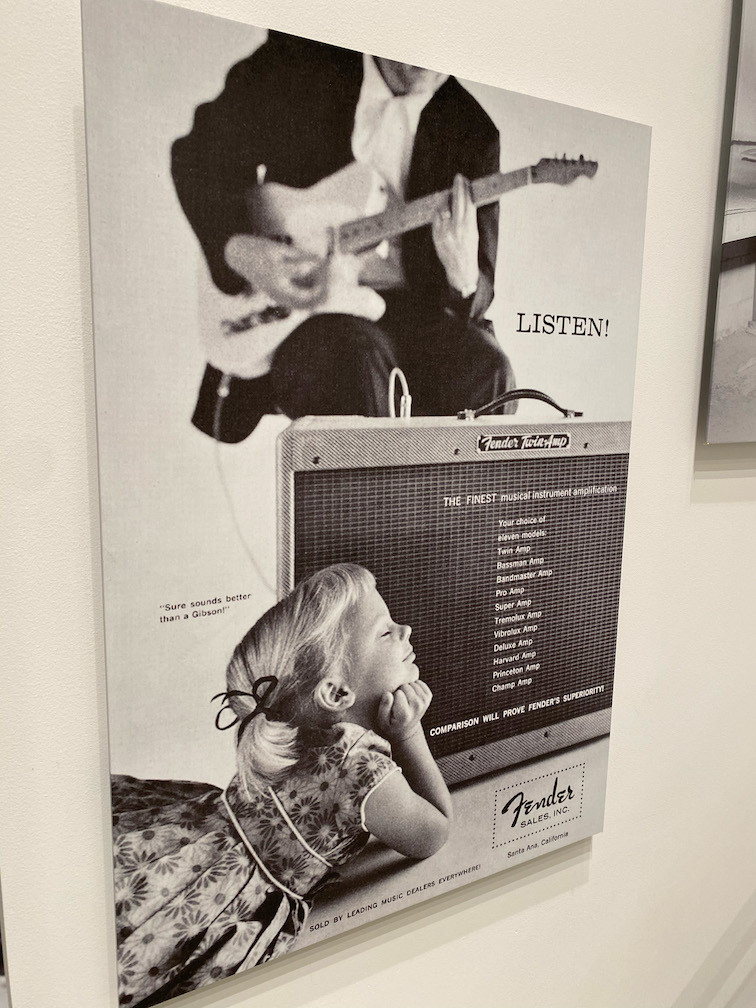Dive into the mesmerizing soundscape of Led Zeppelin’s “Kashmir,” a track that stands as a monumental achievement in rock history. Often cited by Jimmy Page himself as a song he wished defined Led Zeppelin’s legacy even more than “Stairway To Heaven,” “Kashmir” is a hypnotic journey that blends powerful instrumentation with evocative melodies. If you’re ready to explore the depths of this rock epic on your guitar, you’ve come to the right place. This comprehensive guide will break down the “Kashmir” guitar tab, tuning, chords, and techniques, empowering you to master this iconic riff and song.
 Jimmy Page's iconic Telecaster, displayed at the Fender Tokyo store, highlighting the brand's legacy in rock music.
Jimmy Page's iconic Telecaster, displayed at the Fender Tokyo store, highlighting the brand's legacy in rock music.
The Story Behind the Song: Inspiration from the East
“Kashmir” wasn’t conceived in the mountainous region of India it’s named after, but rather on a drive through the stark desert landscapes of southern Morocco. Robert Plant, Led Zeppelin’s vocalist, was deeply moved by the seemingly endless roads and desolate beauty he witnessed. This experience sparked the song’s opening lines: “Oh let the sun beat down upon my face, stars to fill my dreams.”
Released in 1975 on the album Physical Graffiti, “Kashmir” quickly became a cornerstone of Led Zeppelin’s discography and a fan favorite. The title, chosen later, likely resonated due to its exotic and mystical connotations, perfectly mirroring the song’s sonic atmosphere.
The musical framework of “Kashmir” was a collaborative effort between Plant and guitarist Jimmy Page, evolving over several years. They masterfully fused hard rock elements with Eastern musical influences and grand orchestral arrangements. John Bonham’s thunderous drumming provided the powerful rhythmic backbone, completing the song’s signature sound. Recorded at the legendary Headley Grange, the band experimented with a Mellotron to create the haunting string-like textures that define the intro, adding to the song’s unique sonic palette. “Kashmir” continues to be celebrated as a rock masterpiece, consistently ranking high in “greatest songs of all time” lists and inspiring musicians across genres.
 Vintage Fender advertisement showcasing classic guitar designs and the brand's enduring appeal.
Vintage Fender advertisement showcasing classic guitar designs and the brand's enduring appeal.
Is “Kashmir” Difficult to Play on Guitar?
Let’s be upfront: “Kashmir” is not a beginner-level song. The main riff demands an alternate tuning and incorporates syncopated rhythms, placing it firmly in the intermediate guitar playing territory. However, the challenge is incredibly rewarding. Mastering “Kashmir” will significantly enhance your guitar skills and musical understanding.
Tuning Your Guitar to DADGAD for “Kashmir”
The distinctive sound of “Kashmir” is deeply rooted in its unique tuning: DADGAD. This open tuning, a favorite of Jimmy Page, requires you to tune your guitar strings as follows, from thickest (6th string) to thinnest (1st string):
String Tuning for DADGAD:
- 6th String: D
- 5th String: A
- 4th String: D
- 3rd String: G
- 2nd String: A
- 1st String: D
DADGAD tuning creates an open Dsus4 sound, lending a hypnotic and droning quality to the music. It unlocks new chord voicings and sonic possibilities that are simply unattainable in standard tuning. While initially feeling unfamiliar, DADGAD will open up a vast new soundscape for your guitar playing.
 A staircase inside the Fender Tokyo store, leading to the custom shop floor, symbolizing access to high-end guitar craftsmanship.
A staircase inside the Fender Tokyo store, leading to the custom shop floor, symbolizing access to high-end guitar craftsmanship.
Jimmy Page’s Guitar Choice for “Kashmir”
While the exact guitar Jimmy Page used for recording “Kashmir” remains unconfirmed, speculation often points to a Danelectro 3021. This guitar, known for its bright and jangly tone, could have been employed for the iconic intro riff. However, Page was renowned for layering sounds and experimenting with different guitars. It’s plausible he utilized a Les Paul or similar guitar for the heavier, more powerful sections of the song. Ultimately, the magic of “Kashmir” lies in Page’s masterful playing and sonic artistry, regardless of the specific instrument.
“Kashmir” Guitar Chords and Tabs: Breaking Down the Riff
The chord progression in the main “Kashmir” riff is based on a classic musical technique known as a chord cliché. It involves taking a base chord and progressively moving one note within the chord. In “Kashmir,” the progression centers around the D note in the bass, while the upper notes ascend in half-steps, creating a captivating harmonic movement.
Let’s break down the chords with visual aids to help you learn the “Kashmir” guitar tab:
1. Starting Shape: Octave D with Double Lower Note
This initial shape establishes the root and provides a foundational drone.
2. D5 Power Chord
Moving to a D5 power chord adds power and drive to the riff. A power chord, consisting of the root and fifth, creates a full and robust sound.
3. D(#5) or D Augmented Chord
Here, the fifth of the chord (A) ascends by a half-step to A#, creating a D augmented chord. This chord introduces a mysterious and slightly dissonant flavor.
4. D6 Chord
The A# note moves up another half-step to B, resulting in a D6 chord. This chord adds a richer, more melodic dimension to the progression.
5. D7 Chord
Finally, the B note ascends another half-step to C, creating a D7 chord. This chord provides a strong resolution and a bluesy touch before the cycle repeats.
Throughout this progression, the bass note remains constant on D, while the upper harmony ascends chromatically from A to A#, B, and finally C. This ascending movement is the core of the “chord cliché” and creates the song’s captivating and evolving harmonic landscape. You can find detailed “Kashmir” guitar tabs online to further assist your learning and ensure accuracy in finger placement and rhythm.
Conclusion: Embark on Your “Kashmir” Guitar Journey
“Kashmir” is more than just a song; it’s an immersive sonic experience that embodies Led Zeppelin’s unparalleled creativity and musical prowess. While Jimmy Page might playfully wish it received even more recognition than “Stairway to Heaven,” “Kashmir” undeniably stands as a monumental track in its own right, continuing to inspire and captivate musicians and listeners across generations.
So, tune your guitar to DADGAD, explore the “Kashmir” guitar tabs, and immerse yourself in this epic riff. Remember to practice slowly, focus on the syncopated rhythm, and most importantly, enjoy the journey of mastering this iconic piece of rock history.
Ready for more Led Zeppelin guitar lessons? Explore our guides to “Good Times Bad Times guitar lesson” and “Hey Hey What Can I Do Led Zeppelin guitar lesson” to further expand your Zeppelin repertoire!
